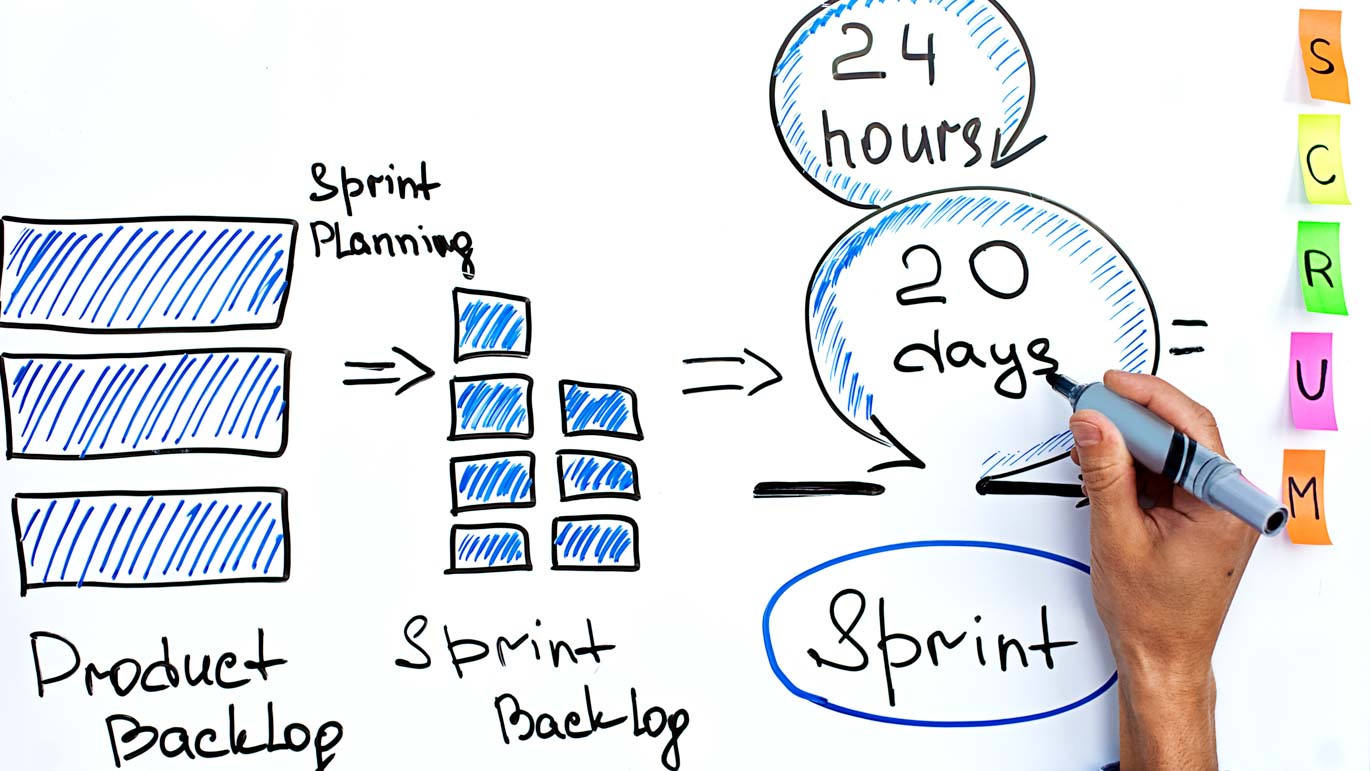One of the key concepts to the future of construction projects is the breaking of silos. It’s accepted in Advanced Work Packaging (AWP) that aligning departments and stakeholders, regardless of when in the project lifecycle their role begins, leads to better communication and enhanced alignment throughout the lifecycle of the project. The same concept holds true for project management methodologies; it can be beneficial to assess whether a methodology that historically belongs to one department might hold value in another.
Traditionally, accurate estimates, stable plans, and solid predictions have been difficult to form in the early stages of project development and are subject to much change. The Agile methodology is a response to the challenges of predictive planning. Agile software development is an approach to software development that focuses on a dynamic, non-deterministic, and non-linear approach to development and planning.
While Agile methodologies have historically been in the purview of software development and management, they have important lessons that can be applied to benefit construction projects. Under the framework of Agile software development are several methodologies for creating this adaptive, fast-moving project management system. In this article, we introduce a lightweight, Agile software development methodology- Scrum – and the insights it offers for the benefit of construction projects of any scale.
What is Scrum?
Scrum is an Agile methodology for completing complex software projects. Like most Agile methodologies, Scrum was originally created for software development but has been found to work well for other complex scopes of work. This wide reach of Scrum is due to its deceptively simple implementation.
In Scrum, a product owner creates a “prioritized wish list”, called a product backlog. The product backlog is then assigned to a series of work phases called “Sprints”. During the planning of each sprint, the development team subsets the product backlog into a “Sprint Backlog” and focuses its energy on those few entries. The team meets every day to align on progress, goals, and expectations. At the end of each Sprint, the work is ready for delivery and ready to hand to the end-user/client or put on the shelves. The teams then meet for a Sprint Review, where they discuss any issues encountered and any lessons learned. As the next Sprint begins, the team chooses another chunk of the product backlog and the entire process begins again taking into account previous lessons learned.
The end goal of Scrum is to ensure that the most pertinent and valuable tasks have been completed before the project ends. The iterative, cyclic strategy allows for a self-feeding cycle of continuous improvement throughout a project.
Agile Practices for Construction Projects
While the Scrum methodology might not be fit for the large, complex tasks in construction projects, especially as the overall predictability of the scope remains a key expectation in construction projects, there are valuable insights to be gained. Below is a list of key Scrum practices that could benefit and inspire your teams and organizations to deliver successful construction projects.
Daily Alignment
In Scrum, teams meet daily (for 10-15 minutes) to discuss the previous day’s progress, the current day’s plan, and any possible challenges they might face during the day. This daily alignment allows the team to identify possible issues and help each other with challenges. Importantly, this daily meeting creates a greater sense of community within a team and contributes to a whole-project outlook, thus breaking silos. In construction projects, daily safety and planning meetings are regularly held in the field. However, this practice is not yet a standard in managing engineering and planning teams in the office. Such short daily alignment meetings could be used to support the implementation of Advanced Work Packaging to provide everyone with the overall progress of engineering and installation work packages.
Transparency: Make Work Visible
The Scrum methodology calls for ceremonies that make progress visible for the entire team. Many teams make use of a board showing project/Sprint progress to search as a visual resource within and outside the team. This visual reminder of progress being made boosts team motivation and morale with minimal extra work. In construction projects, a visual reminder of work package progress would greatly benefit the crew’s work environment in the field and engineering teams in the office and might even lead to increased productivity due to boosted morale.
Continuous Lessons Learned
Scrum calls for a formal lessons-learned analysis at the end of each Sprint, rather than at the end of each project of each major phase. Doing this leads to a more adaptive and agile process where inefficient practices and individual challenges are caught early and addressed before they become systematic. A lessons-learned analysis after the completion of each Construction Work Package would allow construction projects the benefits of an adaptive process despite work packages not being as iterative as Sprints in Scrum.
Concluding Remarks
The Scrum methodology, used in software development, may be considered strange to construction projects. However, the Concord® team believes key agile elements offer many parallels to AWP, a construction industry best practice. Scrum Sprints are similar in nature to construction work packages and the call for early, consistent alignment is a driving principle in both Scrum and AWP.
With small-scale changes, insights from Scrum could greatly benefit construction projects; the Concord® team’s mission is to use interdisciplinary methods to drive dramatically improved performances for construction projects.





